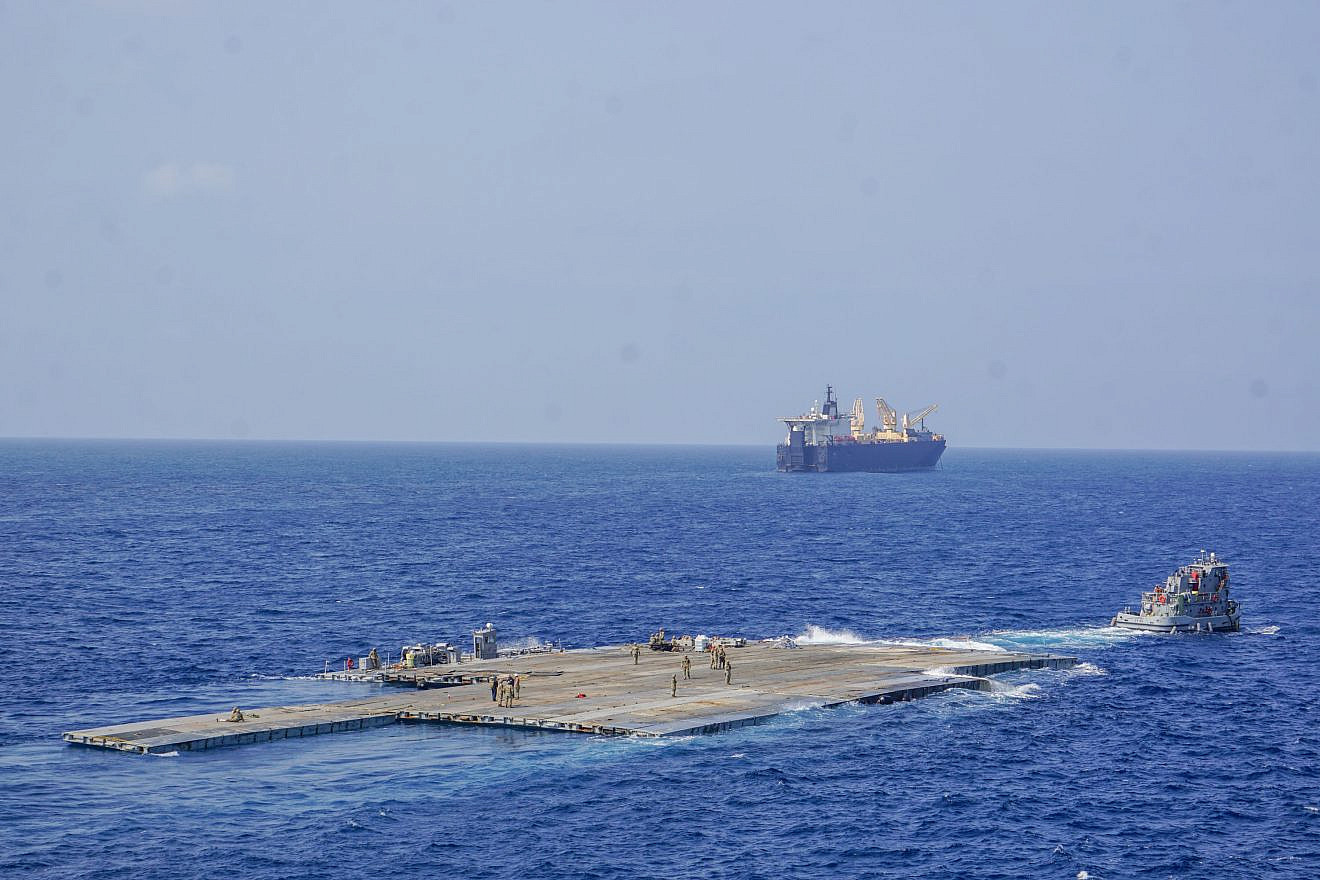Although the U.S. agency tasked with coordinating the Gazan aid pier had pushed back on the idea, U.S. President Joe Biden announced in his March 7 State of the Union address to Congress that the United States would construct the pier, also called the Joint Logistics Over-the-Shore, according to a new report from a U.S. Agency for International Development internal watchdog.
“Despite its role as the U.S. government lead for humanitarian assistance in Gaza, USAID had limited control over the decision to use JLOTS, where it would be located and who would provide security on the beach and during transportation of JLOTS-delivered aid,” according to the USAID inspector general’s report, released on Tuesday.
“These issues, coupled with high winds and rough seas in the Mediterranean Sea near the Gaza coast, impaired the agency’s ability to deliver the intended amounts of aid through the maritime corridor,” it added.
The $230 million JLOTS project—originally projected to cost $320 million—was constructed by the Pentagon to route humanitarian aid from the Port of Larnaca in Cyprus to Gaza via a maritime avenue. The decision to use the JLOTS technology, which is reportedly “long-neglected but nonetheless vital,” came amid White House frustration with the slow transport and distribution of aid via land routes.
A retired U.S. Army transportation officer told Military Times in May that “so few people know what a JLOTS entails” that “you can’t go walk the halls of the Pentagon and find two people who know what they’re talking about, because it’s such a small niche capability that’s very, very specialized.”
Biden also announced the “temporary pier in the Mediterranean on the Gaza coast that can receive large ships carrying food, water, medicine and temporary shelters,” which he said would “enable a massive increase in the amount of humanitarian assistance getting into Gaza every day,” as the United Nations and others claimed that famine was imminent or had already arrived in parts of Gaza.
Those claims have since been debunked and revised, although Tuesday’s 22-page report from the USAID inspector general states that “about 96% of the population in Gaza, or 2.15 million people, continues to face severe food insecurity and is at a high risk of famine.”
Many international nonprofits and Israel critics chastised the Biden administration for the project, which they saw as an alternative to forcing Israel to better facilitate and coordinate the transport of aid over land. Israeli officials have often said that the United Nations and others distort the extent to which the Jewish state has sought to help move aid.
The USAID report states that “multiple USAID staff expressed concerns that the focus on using JLOTS would detract from the agency’s advocacy for opening land crossings, which were seen as more efficient and proven methods of transporting aid into Gaza.”
JLOTS was beset by a host of problems, mainly caused by rough seas and bad weather, which rendered the pier inoperable for significant stretches of time. In the end, the pier functioned for only 20 days, bringing in enough food for around 450,000 people, per the USAID report. Both figures fell well short of the project’s stated goals.
“At a July press conference a week before the JLOTS operation ended, President Biden
acknowledged the underperformance of the maritime corridor effort,” per the report, which quotes the president saying, “I’ve been disappointed that some of the things that I’ve put forward have not succeeded … like the port … I was hopeful that would be more successful.”
An Israeli hostage rescue operation, launched from an area near the pier, led to the end of cooperation from the U.N. World Food Programme, which said there was danger for its staff to continue operating when it might be seen as participating in the conflict.
“In June, WFP paused its distribution of JLOTS-delivered aid based on security concerns and community misperceptions from disinformation that the pier had been used to assist the IDF in a military operation to free several hostages,” the report states.
The inspector general report adds that the Biden administration and the World Food Programme agreed to place the pier in northern Gaza at the Food Programme’s insistence, due to the greater need for aid delivery in that part of the coastal enclave. The agreement called for a U.N. member state to provide security at the pier.
Ultimately, the Pentagon decided to construct the pier in central Gaza, purportedly for security reasons.
When no neutral country agreed to assume responsibility for securing the pier, Israel took on the role.
The report cites those two changes as broken commitments by USAID to WFP. It said that United States and Israeli military “security requirements took precedence” over USAID’s efforts to transport aid into Gaza via the pier.
The report makes no recommendations but concludes that USAID, as it continues its aid mission in Gaza, “should examine its experience with JLOTS for lessons related to deconfliction, stakeholder coordination, and contingency planning.”
The Pentagon said last week that the final six million pounds of aid originating from Cyprus is set to be delivered “in the coming days” via Israel’s Ashdod port.


























